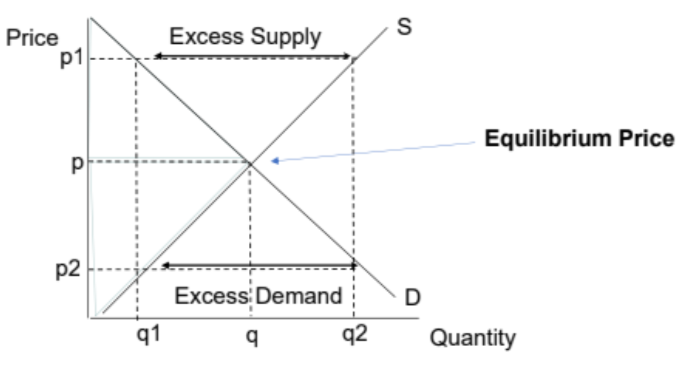3c. Price determination
Buyers and sellers come together in a market. An equilibrium (market) price is found and goods or services are exchanged.
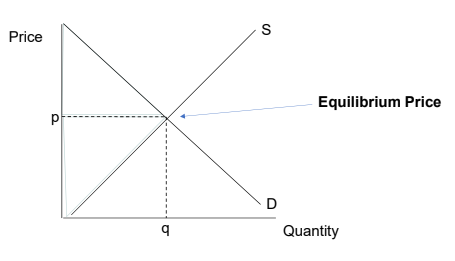
SCENARIOS
- There is an improvement in the quality of machines producing shoes in the UK.
This will mean firms can produce more so supply will shift out to S1 leading to a fall in price from P to P1 and an increase in quantity from Q to Q1
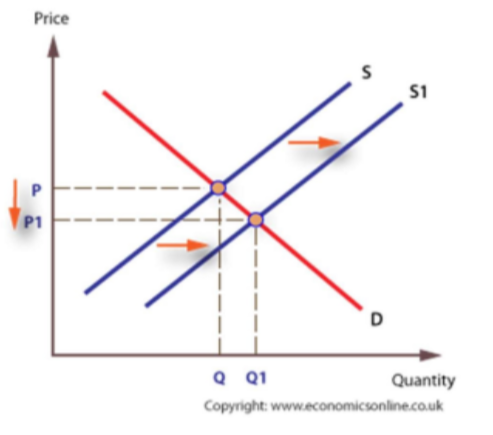
There is a successful advertising campaign for IKEA furniture.
- This will mean IKEA furniture is more desirable so demand will shift out to D1 leading to a rise in price from P to P1 and an increase in quantity from Q to Q1
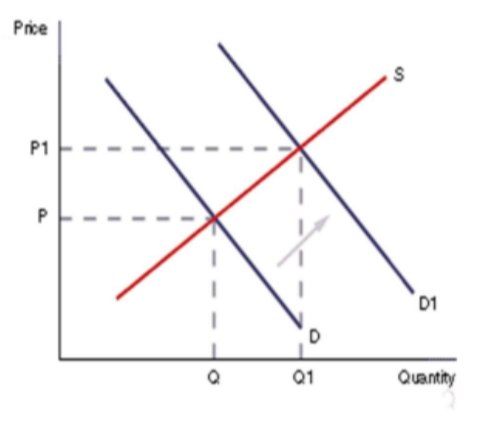
The impact on Mars of a decrease in the price of Snickers.
- This will mean more people buy Snickers (a substitute) so demand will shift in to D1 leading to a fall in price from P to P1 and a decrease in quantity from Q to Q1
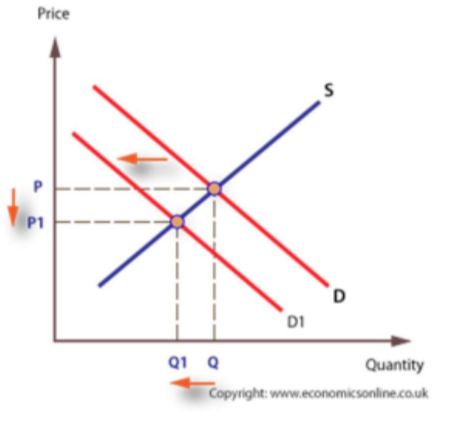
A decrease in VAT from 20% to 15% on cars.
This is an indirect tax (payable by firms) so supply will shift from S2 to S1 (note this is a % so it is not a parallel shift)- this will causes an increase in quantity from Q2 to Q1 and a fall in price from P2 to P1
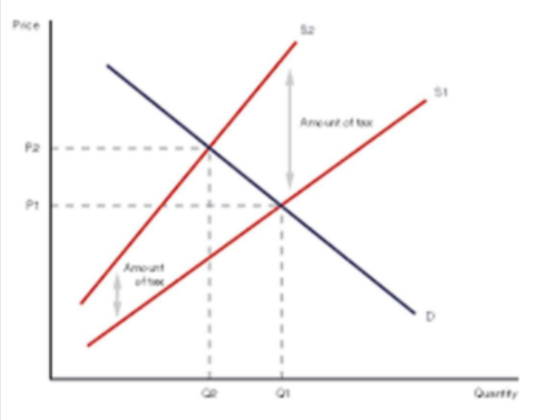
- The impact on football tickets if the government increases the basic rate of
income tax from 20% to 25%.
This will mean more people have less money to pay for tickets so demand will shift in to D1 leading to a fall in price from P0 to P1. As the supply of seats will be fixed in the short-run there will not be much of a change in quantity
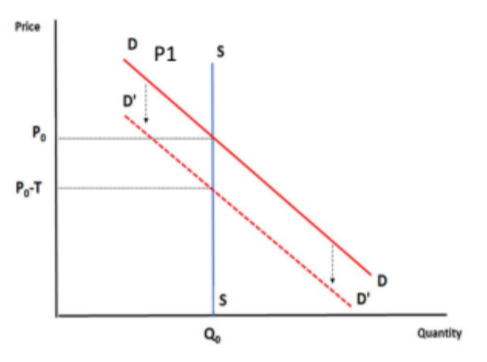
- The impact on supermarkets if there is an increase in the minimum wage to
£10 per hour for all workers.
Higher wages will be an increased cost on supermarkets causing supply to shift in to S1. However, higher wages mean workers have more money so demand increases to D1. This will cause a rise in price from P to P1 and little change in output
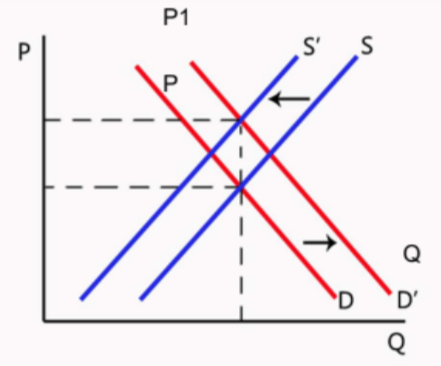
- The effect of an increase in income on bus travel.
Bus travel is an inferior good so as income goes up demand will shift in to D1 leading to a fall in price from P to P1 and a decrease in quantity from Q to Q1
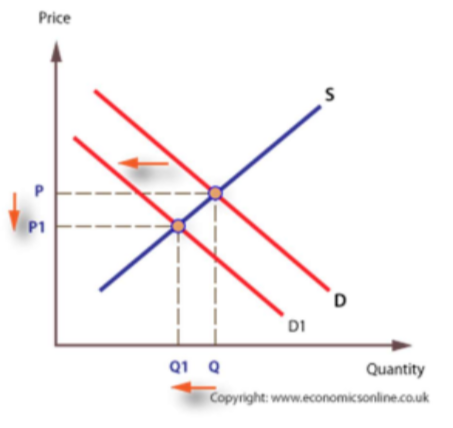
- The government sets a floor price for alcohol above the equilibrium price
If there is a minimum price above equilibrium then Q2 will be supplied but only Q1 demanded. This will therefore cause excess supply of Q2-Q1.
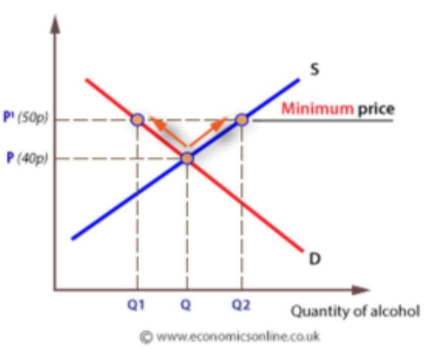
Excess Supply
If the price is set above the market equilibrium at p1 this will cause an excess of supply between q1 and q2.
This happens because there is a contraction along the demand curve as less consumers are willing and/or able to afford it at a higher price.
However, more firms are willing and/or able to supply at a higher price so enter the market and there is an extension along the supply curve.
This might be obvious because of waste or the need to store goods.
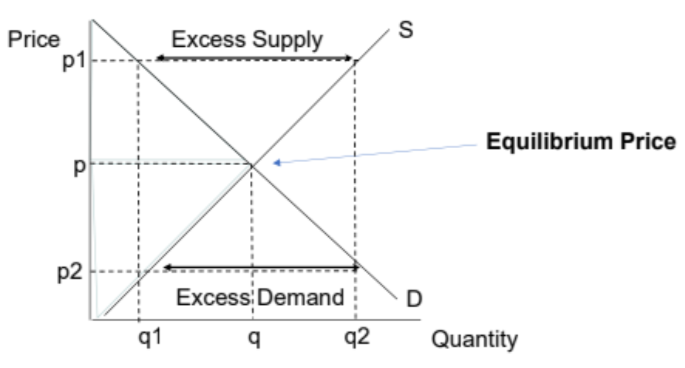
Excess demand
If the price is set below the market equilibrium at p2 this will cause an excess of demand between q1 and q2.
This happens because there is a contraction along the supply curve as less firms are willing and/or able to produce it at a lower price.
However, more consumers are willing and/or able to buy at a lower price so enter the market and there is an extension along the demand curve.
This might be obvious because of queueing or the need to ration goods
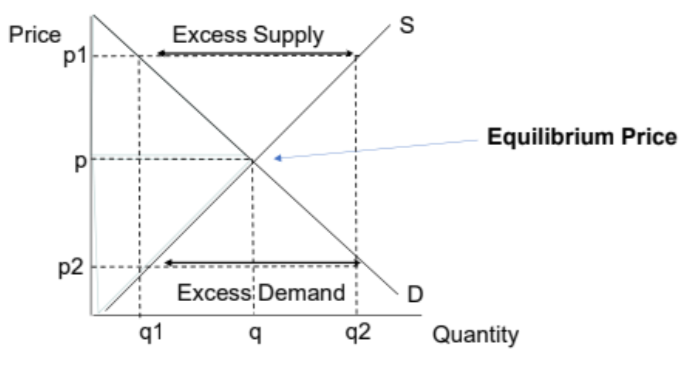
Excess demand and excess supply
If the price is set above the market equilibrium this will cause an excess of supply between q1 and q2.
This happens because there is a contraction along the demand curve as less consumers are willing and/or able to afford it at a higher price.
This might be obvious because of waste or the need to store goods. If the price is set below the market equilibrium this will cause an excess of demand between q1 and q2.
